3 Successful Forex Trading Strategies - ThinkMarkets
3 Successful Forex Trading Strategies - ThinkMarkets |
| 3 Successful Forex Trading Strategies - ThinkMarkets Posted: 28 Sep 2020 06:04 AM PDT By now, you have identified a time frame, the desired position size on a single trade, and the approximate number of trades you are looking to open over a certain period of time. Below, we share three popular Forex trading strategies that have proven to be successful.
ScalpingForex scalping is a popular trading strategy that is focused on smaller market movements. This strategy involves opening a large number of trades in a bid to bring small profits per each. As a result, scalpers work to generate larger profits by generating a large number of smaller gains. This approach is completely opposite of holding a position for hours, days, or even weeks. Scalping is very popular in Forex due to its liquidity and volatility. Investors are looking for markets where the price action is moving constantly to capitalize on fluctuations in small increments. This type of trader tends to focus on profits that are around 5 pips per trade. However, they are hoping that a large number of trades is successful as profits are constant, stable and easy to achieve. A clear downside to scalping is that you cannot afford to stay in the trade too long. Additionally, scalping requires a lot of time and attention, as you have to constantly analyze charts to find new trading opportunities. Let's now demonstrate how scalping works in practice. Below you see the EUR/USD 15-min chart. Our scalping trading strategy is based on the idea that we are looking to sell any attempt of the price action to move above the 200-period moving average (MA).
In about 3 hours, we generated four trading opportunities. Each time, the price action moved slightly above the 200-period moving average before rotating lower. A stop loss is located 5 pips above the moving average, while the price action never exceeded the MA by more than 3.5 pips. Take profit is also 5 pips as we focus on achieving a large number of successful trades with smaller profits. Therefore, in total 20 pips were collected with a scalping trading strategy.
Day TradingDay trading refers to the process of trading currencies in one trading day. Although applicable in all markets, day trading strategy is mostly used in Forex. This trading approach advises you to open and close all trades within a single day. No position should stay open overnight to minimize the risk. Unlike scalpers, who are looking to stay in markets for a few minutes, day traders usually stay active over the day monitoring and managing opened trades. Day traders are mostly using 30-min and 1-hour time frames to generate trading ideas. Many day traders tend to base their trading strategies on news. Scheduled events e.g. economic statistics, interest rates, GDPs, elections etc., tend to have a strong impact on the market. In addition to the limit set on each position, day traders tend to set a daily risk limit. A common decision among traders is setting a 3% daily risk limit. This will protect your account and capital.
In the chart above, we see GBP/USD moving on an hourly chart. This trading strategy is based on finding the horizontal support and resistance lines on a chart. In this particular case, we are focused on resistance as the price is moving upward. The price movement tags the horizontal resistance and immediately rotates lower. Our stop loss is located above the previous swing high to allow for a minor breach of the resistance line. Thus, a stop loss order is placed 25 pips above the entry point. On the downside, we use the horizontal support to place a profit-taking order. Ultimately, the price action rotates lower to bring us around 65 pips in profits.
Position TradingPosition trading is a long-term strategy. Unlike scalping and day trading, this trading strategy is primarily focused on fundamental factors. Minor market fluctuations are not considered in this strategy as they don't affect the broader market picture. Position traders are likely to monitor central bank monetary policies, political developments and other fundamental factors to identify cyclical trends. Successful position traders may open just a few trades over the entire year. However, profit targets in these trades are likely to be at least a couple of hundreds pips per each trade. This trading strategy is reserved for more patient traders as their position may take weeks, months or even years to play out. You can observe the dollar index (DXY) reversing its trend direction on a weekly chart below.
A reversal is a result of the huge monetary stimulus provided by the US Federal Reserve and the Trump administration to help the troubled economy. As a result, the amount of active dollars increases, which decreases the value of the dollar. Position traders are likely to start selling the dollar on trillion-dollar stimulus packages.
| ||||||||||||||||||||||||||||||||||||||||||||||||||||||||||||
| Best ASIC Regulated Forex Brokers 2020 (UPDATED) - Public Finance International Posted: 28 Sep 2020 06:18 AM PDT Forex brokers regulated by Australian Securities and Investments Commission (ASIC) must adhere to strict licencing requirements. ASIC is one of the toughest financial regulatory authority in the industry. There are many requirements that brokers has to meet such as: financial sustainability, safe trading environment, operational standards etc.. In case of insolvency ASIC regulated brokers must also be able to provide credit to the general public. Traders funds have to be kept in a segregated account in one of the biggest banks in Australia. ASIC Authorized Forex Brokers 2020Here are the best Forex brokers regulated by ASIC:
ASIC regulated brokers offer a high level of security, while some of the EU or US restrictions do not apply. Leverage trading isn't as limited (1:500), scalping and hedging are allowed. However, promotions and bonuses are still restricted. Due to the strict licencing requirements, ASIC regulated brokers are considered safe. Still, before picking one to trade with, you should consider factors like: fees, commissions, leverage, trading platform, customer service, minimum deposits, withdrawals, education… to name a few. Plus500 – Best Forex Broker Overall
AvaTrade – Globally Regulated Forex Broker
eToro – Best ASIC Regulated Social Forex Trading
FP Markets – Tight Forex Spreads
CMC Markets – Great Portfolio of Forex Pairs
Saxo Bank – Great Portfolio of Forex Pairs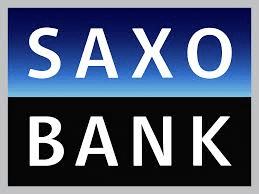
City Index – Great Research Materials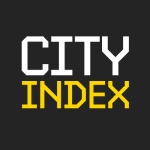
What is the Australian Securities and Investment Commission (ASIC)?ASIC was founded in 1998 to replace its predecessor – the Australian Securities Commission (ASC) – after being granted with more far-reaching powers that include overseeing the offering of superannuation, insurance, banking, and financial products to consumers in Australia. ASIC primarily deals with three segments of the financial markets: financial services, consumer credit, and markets. Financial services: ASIC is in charge of licensing and monitoring the financial service sector in Australia including investment funds, superannuation providers, share issuers, insurers, and the financial derivatives market. Consumer credit: ASIC regulates the activities of banks, mortgage providers, and credit unions in the country and they are in charge of issuing licenses for these institutions while also enforcing the laws related to lending and other similar practices. Markets: ASIC monitors the activities of the country's financial markets and financial institutions such as stock exchanges and market-maker entities. Additionally, they oversee trading activities and brokers registered and operating in the country, issuing licenses to companies seeking to provide their services in Australia. ASIC acts following the Australian Securities and Investments Commission Act of 2001 (ASIC Act).Some of their key roles are:
The commission is integrated by three to eight members who are responsible for overseeing its activities and their organizational structure includes various key departments such as:
As of July 2020, James Shipton is the Chairman of ASIC, while the commission's Chief Financial Officer is Maria Moore (acting), and its Chief Risk Officer is Zack Gurdon. Forex trading In AustraliaForex trading is an activity that consists of speculating with foreign currency pairs. A currency pair tracks the value of one currency relative to another. For example, the GBP/USD pair tracks the value of the pound sterling – UK's official fiat currency – versus the US dollar – the official currency of the United States. Traders can either take long positions, which profit from upward price movements, or short positions, which benefit from downward price fluctuations, and these trading operations are commonly conducted by using leverage. Leveraged trades are very common in forex trading operations since relative price movements in forex pairs tend to be small, which reduces the chance of making sizable profits if your investment account has a small balance. However, using leverage also brings an additional risk for traders, as relatively small price movements can affect the value of the account significantly and the higher the leverage ratio, the most likely it is that any small fluctuation could end up triggering a margin call, which is a situation where the broker liquidates some of the trader's positions to offset the losses caused by unfavorable price movements. Changes in the value of forex pairs are expressed in pips – the smallest unit of a forex pair value – or as a percentage and forex traders usually don't hold a position for longer than a day, which is the reason why some traders are called 'day traders'. Additionally, there are also certain holding costs involved if traders maintain their positions for longer than a day. The forex market is the biggest financial market in the world with nearly $6 trillion in daily trading volumes. The market is open 24/5 as various markets around the world – Asian, European, American – are opened at different hours. However, positions held after 5 pm EST will be considered as if they were held by one entire day and will be charged with the corresponding holding costs accordingly. Forex traders can profit from anticipating fluctuations in the price of certain currency pair by either taking long or short positions and they can also use trade orders such as stop-loss orders to mitigate the risk of unfavorable price movements. Forex pairs can be traded directly – spot currencies – or they can be traded via CFDs and some of the most common currency pairs are the EUR/USD, USD/JPY, GBP/USD, and USD/CFH. Is forex trading legal in Australia?Yes, forex trading is permitted in Australia. Forex brokers can either be regulated by ASIC directly or they can also be granted permission to operate in the country even though they may not be licensed by ASIC. The most well-reputed brokers are either regulated by ASIC or by at least one top-tier financial jurisdiction such as the UK, the United States, Singapore, or Japan, and ASIC will usually grant them with the possibility of operating in the country as long as they abide by Australian financial laws. On the other hand, traders in Australia should know that there are tax implications resulting from forex trading, especially for short-term capital gains derived from this activity. Who is regulated by ASIC?The Australian Securities and Investments Commission regulates credit services, financial services providers and financial markets. What is a regulated Forex broker?Regulated Forex brokers are registered and authorized by financial regulators. To put it simply, a regulated broker means they are safe and legit. Brokers must comply with the all the rules of the financial regulator. Unregulated Forex brokers are not compliant and the regulatory bodies don't oversee their activities. Are unregulated brokers safe?Unregulated Forex brokers are common in the industry. That does not mean they are not safe or illegal. Regulated brokers are legally obliged to face consequences if the don't follow the rules. How to open a Forex account if you live in Australia?Opening an account with an ASIC-regulated Forex broker should not take more than 24 hours. Most brokers nowadays provide the possibility of registering online. The process of verifying your identity may take longer depending on the broker you choose to work with. Forex brokers commonly require a minimum deposit to open an account. Some allow traders to open an account with no balance (minimum deposit). Meanwhile, the portfolio of Forex pairs offered by brokers varies from one broker to the other. After you have opened your account, you will be able to start taking positions in Forex pairs. You can use the amount of leverage your broker has made available to you when entering the trades. Leverage ratios are commonly expressed as a ratio – X:1 or 1:X, this means that for every dollar you have deposited into the account you can trade X number of dollars by using borrowed funds. Risks of trading ForexForex trading is a risky activity and Australian traders should know that a significant percentage of investor accounts lose money by trading these financial products – whether that is done directly via spot currencies or by using CFDs. You can lose money due to unfavorable price movements and especially if you fail to place a stop-loss order for your trades. Additionally, there's a risk that your broker may liquidate some or all of your positions if your balance falls below the minimum maintenance margin. Also, it is important to know that forex pairs are highly volatile, especially exotic pairs with low liquidity, and even with a stop-loss order in place a trade can generate an unfavorable outcome if the broker fails to execute the order at the stop price due to slippage. ConclusionWe hope you enjoyed this overview of the best ASIC approved Forex brokers. More information on ASIC, ASIC regulation, and ASIC regulated brokers can be found on each of the websites of the above-listed ASIC regulated brokers or in ASIC's official website (www.asic.gov.au). Here are the best ASIC approved Forex Brokers for 2020: |
| You are subscribed to email updates from "best forex traders" - Google News. To stop receiving these emails, you may unsubscribe now. | Email delivery powered by Google |
| Google, 1600 Amphitheatre Parkway, Mountain View, CA 94043, United States | |
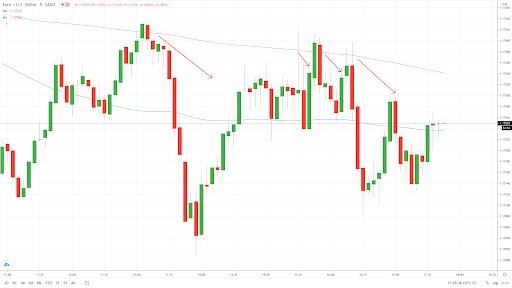
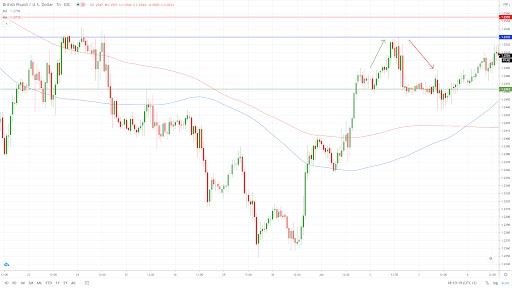
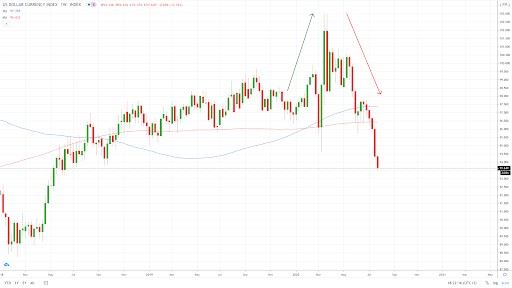
Comments
Post a Comment